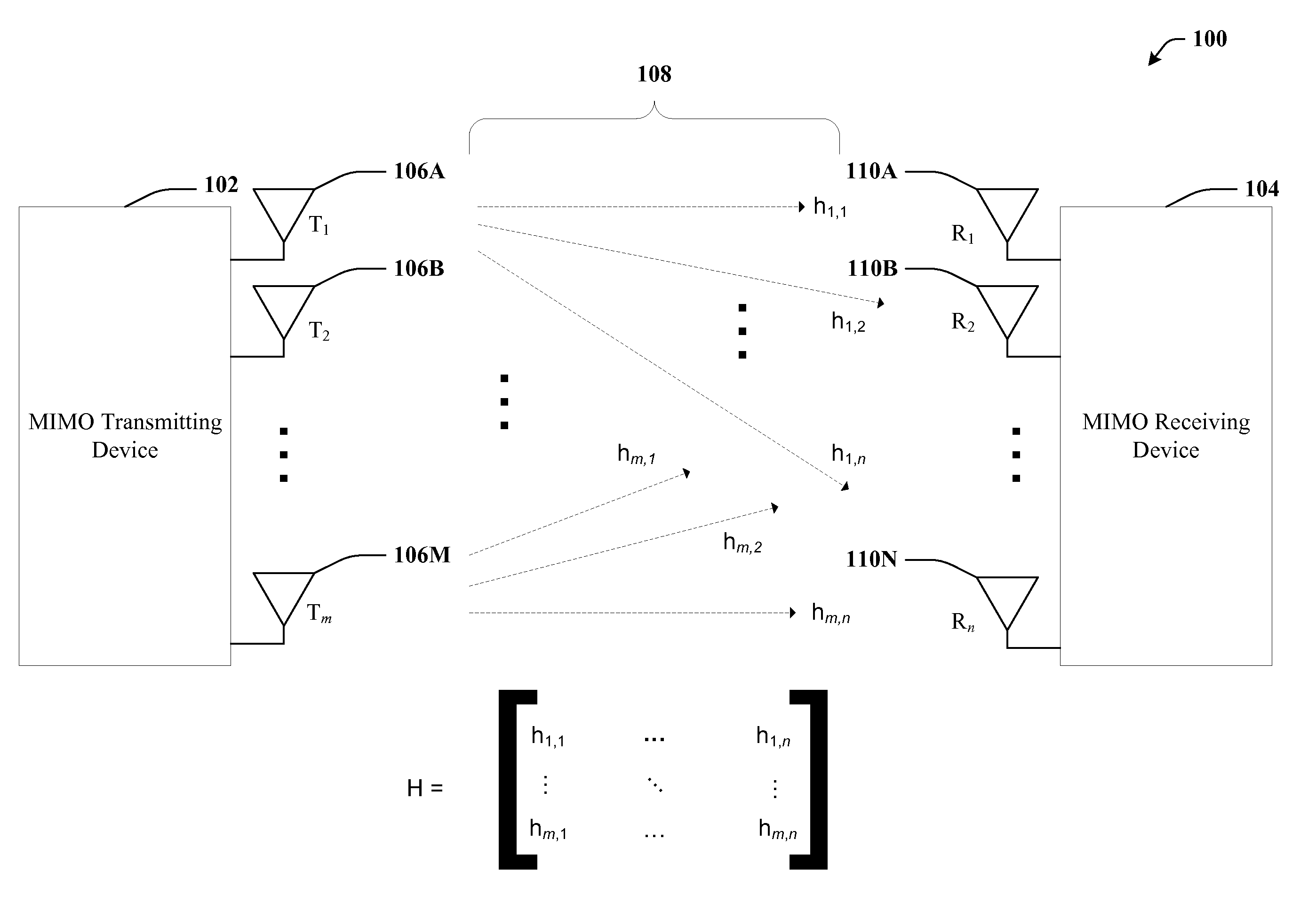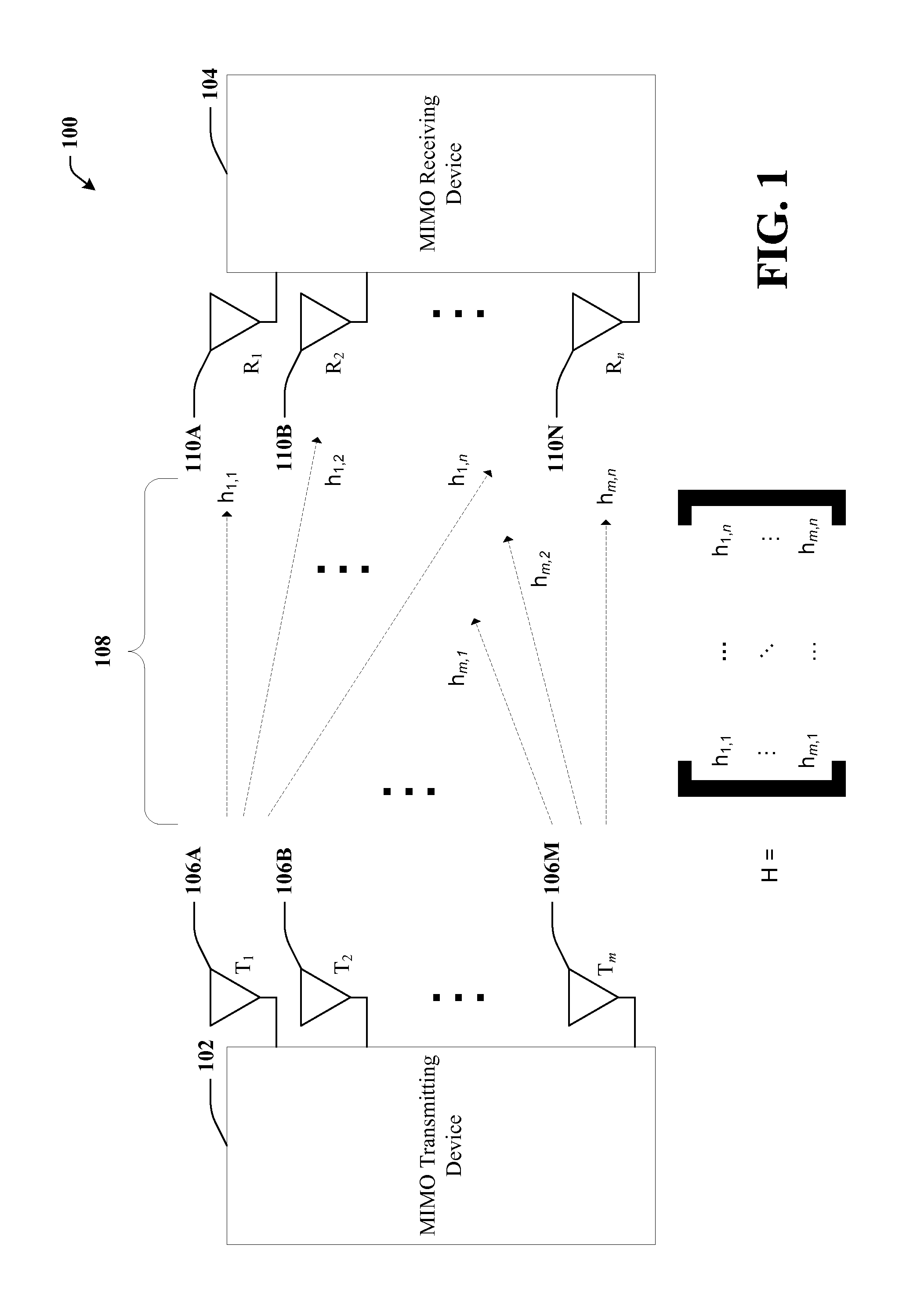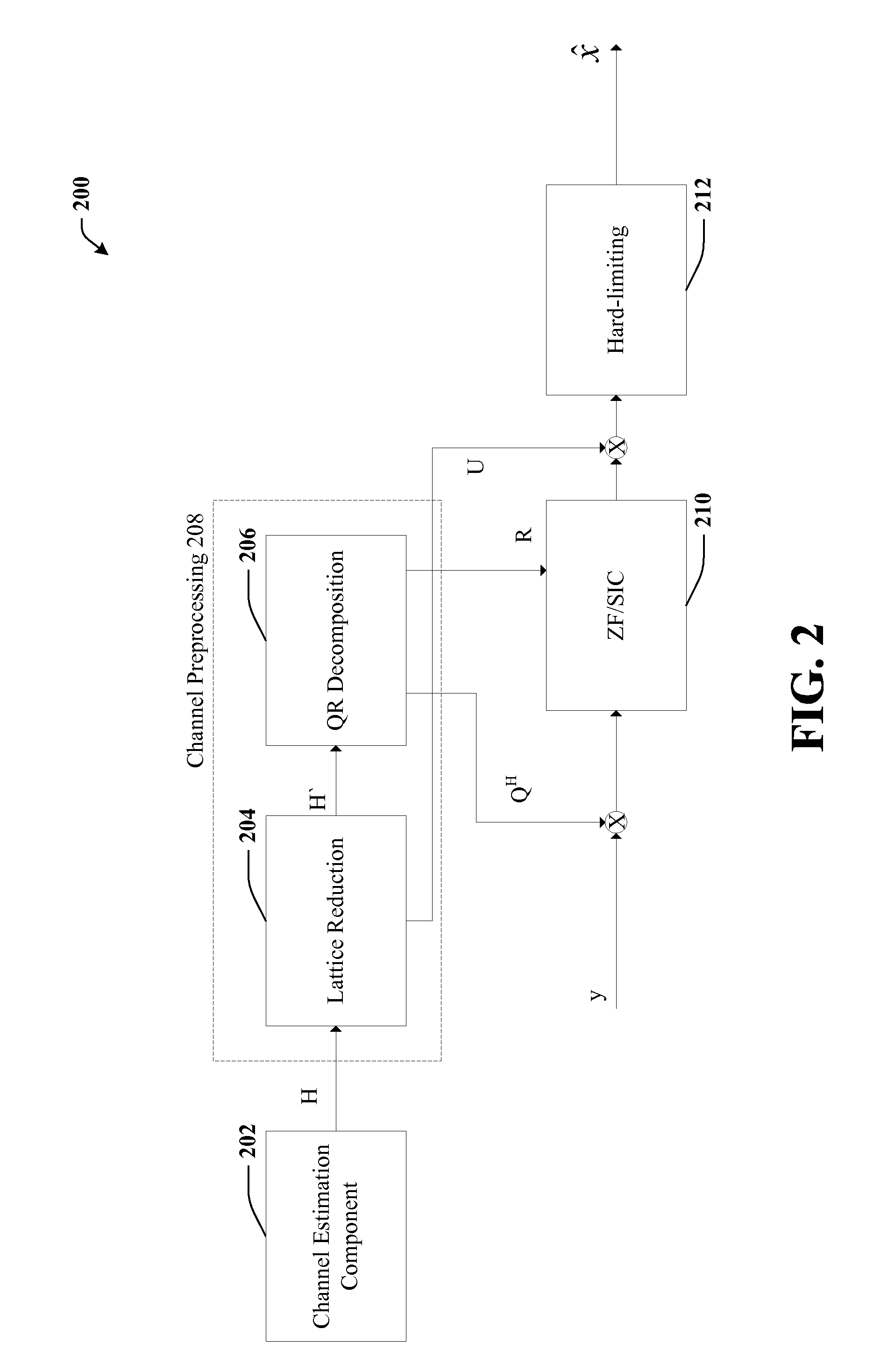Lattice-reduction-aided MIMO detectors
a technology of lattice base reduction and detector, applied in the field of wireless communication systems, can solve the problems of affecting the quality and efficiency of such approaches, the process of finding a good lattice base reduction can be significantly complicated, and the signal detection and decoding is more complex in the mimo network, so as to reduce complexity and time, and accurately detect the transmitted symbols
- Summary
- Abstract
- Description
- Claims
- Application Information
AI Technical Summary
Benefits of technology
Problems solved by technology
Method used
Image
Examples
Embodiment Construction
[0023]The present invention is now described with reference to the drawings, wherein like reference numerals are used to refer to like elements throughout. In the following description, for purposes of explanation, numerous specific details are set forth in order to provide a thorough understanding of the present invention. It may be evident, however, that the present invention may be practiced without these specific details. In other instances, well-known structures and devices are shown in block diagram form in order to facilitate describing the present invention.
[0024]Turning to FIG. 1, an exemplary operating environment 100 is illustrated. In particular, a MIMO transmitting device 102 and a MIMO receiving device 104 are illustrated. The MIMO transmitting device 102 has m transmitting antennas (106A, 106B . . . 106M). Each transmitting antenna send data over channel 108 to n receiving antennas. For the sake of clarity, it is assumed that m104 and a MIMO transmitter 102.
[0025]FIG....
PUM
 Login to View More
Login to View More Abstract
Description
Claims
Application Information
 Login to View More
Login to View More - R&D
- Intellectual Property
- Life Sciences
- Materials
- Tech Scout
- Unparalleled Data Quality
- Higher Quality Content
- 60% Fewer Hallucinations
Browse by: Latest US Patents, China's latest patents, Technical Efficacy Thesaurus, Application Domain, Technology Topic, Popular Technical Reports.
© 2025 PatSnap. All rights reserved.Legal|Privacy policy|Modern Slavery Act Transparency Statement|Sitemap|About US| Contact US: help@patsnap.com



